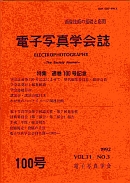Volume 28, Issue 3
Displaying 1-10 of 10 articles from this issue
- |<
- <
- 1
- >
- >|
-
1989Volume 28Issue 3 Pages 247-254
Published: 1989
Released on J-STAGE: March 18, 2008
Download PDF (3003K) -
1989Volume 28Issue 3 Pages 255-263
Published: 1989
Released on J-STAGE: March 18, 2008
Download PDF (968K) -
1989Volume 28Issue 3 Pages 264-268
Published: 1989
Released on J-STAGE: March 18, 2008
Download PDF (674K)
1989Volume 28Issue 3 Pages
269-273
Published: 1989
Released on J-STAGE: March 18, 2008
Published: 1989
Released on J-STAGE: March 18, 2008
Download PDF (612K)
1989Volume 28Issue 3 Pages
284-290
Published: 1989
Released on J-STAGE: March 18, 2008
Published: 1989
Released on J-STAGE: March 18, 2008
Download PDF (1610K)
1989Volume 28Issue 3 Pages
292-298
Published: 1989
Released on J-STAGE: March 18, 2008
Published: 1989
Released on J-STAGE: March 18, 2008
Download PDF (1552K)
1989Volume 28Issue 3 Pages
299-305
Published: 1989
Released on J-STAGE: March 18, 2008
Published: 1989
Released on J-STAGE: March 18, 2008
Download PDF (3898K)
1989Volume 28Issue 3 Pages
311-314
Published: 1989
Released on J-STAGE: March 18, 2008
Published: 1989
Released on J-STAGE: March 18, 2008
Download PDF (811K)
1989Volume 28Issue 3 Pages
274-283
Published: 1989
Released on J-STAGE: March 18, 2008
Published: 1989
Released on J-STAGE: March 18, 2008
Download PDF (1187K)
1989Volume 28Issue 3 Pages
306-310
Published: 1989
Released on J-STAGE: March 18, 2008
Published: 1989
Released on J-STAGE: March 18, 2008
Download PDF (1018K)
- |<
- <
- 1
- >
- >|
